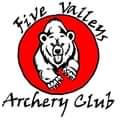News
Nurturing Creative Cities
Creativity and curiosity are key ingredients for innovation, so it is not too surprising that many communities are looking for ways to increase the creative spirit among their residents and businesses. The how-to of nurturing creativity does not follow a simple recipe for easy replication across the country, but a recent World Bank working paper provides a broad platform of key ingredients.
In Dynamic Cities and Creative Clusters, Weiping Wu examines seven American cities as well as Dublin, Bangalore and Hong Kong to identify common factors and public policies that have built these cities into urban hubs of creative industries. Wu, professor of urban studies at the School of World Studies at the Virginia Commonwealth University, defines these cities as having a concentration of creative industries that generate products protected by intellectual property (IP) laws and that house the creative workers for those industries. Wu notes the “creative class” includes occupations in architecture, design, engineering, entertainment and science.
According to Wu, several factors appear to form an important role in boosting the creativity quotient of an urban area, including:
* Clustering of activity – geographic concentrations of interconnected businesses and organizations in a particular industry or sector;
* Ease of entry for small firms and a supportive environment within the cluster;
* Higher levels of new business formation via start-ups and spin-offs;
* An existing and growing pool of labor talent; and,
* A creative milieu that nurtures creativity and innovation.
Many creative clusters emerge because they have successfully leveraged a “locational advantage.” Wu cites a number of locational factors, including successful anchor firms, mediating organizations, an appropriate base of knowledge and skill, and diversity and quality of place. He also cites recent research that indicates high levels of R&D spending, effective IP protection, openness to competition, and focus on higher education spending positively influence innovative input.
In the U.S., cities with leading research institutions and a highly educated workforce can focus on ways to leverage these elements because public policies supporting innovation already exist. Wu cautions that the surrounding community needs to absorb the innovation generated by the research universities and provide the lifestyle sought by creative firms and workers. He notes the local culture also needs to encourage experimentation, accept failure and promote recovery – key elements in entrepreneurship and the creative process.
Wu cautions that creative cities must continue to innovate as other countries and cities seek to replicate their success. For instance, San Diego has been hampered by the limited flights, especially direct flights of its municipal airport. Meanwhile, Hong Kong has poor R&D investment and an indifferent research university.
Dynamic Cities and Creative Clusters is available at: http://d.repec.org/n?u=RePEc:wbk:wbrwps:3509&r=all
Copyright State Science & Technology Institute 2005. Redistribution to all others interested in tech-based economic development is strongly encouraged please cite the State Science & Technology Institute whenever portions are reproduced or redirected.
MATR Supporters (view all)
Sorry, we couldn't find any posts. Please try a different search.


